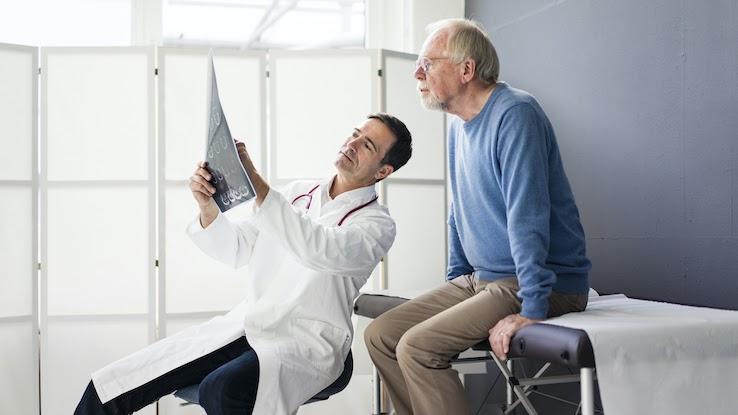How Can a Leech Continue to Suck Blood Without It Clotting Up

Clotting is the way that your body naturally stops wounds from bleeding and begins the healing process after an injury that damages or breaks your blood vessels. The blood clots that form at the site of an injury usually break down after the wound heals. However, blood clots can sometimes form in unnecessary places. And, they might not dissolve properly. This can lead to harmful issues in your body.
Almost 1 million people are affected by blood clots every year in the United States, and a third of those people may develop long-term issues from those blood clots. Because blood clots are sometimes life-threatening and can even lead to sudden death, knowing the warning signs can save your or a loved one's life. Learn about some of the common signs of a blood clot to look out for.
Blood clots can cause you to develop a variety of different symptoms, and you might not experience all of them at the same time. Learning about the warning signs of blood clots can help you get faster treatment that increases your chances of a healthy recovery.
Swelling and Pain in the Leg
Most blood clots occur first in people's legs before breaking off in pieces and traveling to their lungs. Recognizing and treating a blood clot while it's still in your leg could help you prevent further issues that may occur. If your leg is swollen, considerably warmer than the other leg and has areas of redness, talk to your doctor right away.
Shortness of Breath and Faster Breathing
If you have a blood clot, you might not experience symptoms until smaller clots break off from a larger clot and travel to your lungs. At this point, you may experience shortness of breath. Shortness of breath may not be a symptom of a blood clot on its own, but in combination with other blood clot symptoms it justifies seeing a doctor.
Sharp Chest Pain
Pain can occur under your chest bone or to the side of your chest when the blood clot reaches your lungs. It may feel like a burning, stabbing, aching or heavy sensation. If you have this symptom, you should prepare to see your healthcare provider. If the pain becomes severe, head to the emergency room.
Increased Pain During Movement
If you're experiencing pain in your chest that increases when you bend over, cough, laugh or move your chest in any way, a blood clot may have reached your lungs. Once a blood clot reaches your lungs, your heart rate picks up dramatically. If you find yourself continuously experiencing an increased heart rate and you're not sure of the reason, contact your healthcare provider immediately.
Sudden Cough
If you have a sudden, severe cough, it could indicate that a small piece of the blood clot has gone into your lungs. Coughing up blood is always a very serious issue, especially if you suspect you might have a blood clot. Bloody mucus is also a cause for concern. If the cough doesn't go away, seek medical attention right away.
Causes of Blood Clots
You're at a higher risk of developing blood clots if you do or experience the following:
- Smoke
- Injure your legs
- Take birth control pills
- Use hormone replacement therapy
If you or someone in your family had a blood clot before, this can increase your risk of developing a second blood clot.
Diagnosing and Treating Blood Clots

Doctors can diagnose blood clots in a few different ways. If you're experiencing signs of a blood clot, your healthcare provider may perform a physical exam, blood tests or imaging tests. Imaging tests may include X-rays, ultrasounds and CT scans. Looking into your medical history can also help your doctor diagnose both your blood clots and the reason for them.
There are a few different treatments that a medical professional may recommend. Medicines like anticoagulants and thrombolytics can help prevent and break apart blood clots. A thrombectomy, which is a surgery to remove a blood clot, may be necessary in some cases. The best treatment is based on the location and severity of the blood clots and whether they're in your veins or arteries.
There are various signs that you may have a blood clot. If you experience swelling in your leg, problems breathing or pain in different areas of your body, you may have a blood clot. Make an appointment with a healthcare provider right away if you experience any of these symptoms.
Resource Links:
"Blood Clots | Hypercoagulability," Medline Plus
"Blood clots," Mayo Clinic
"Deep vein thrombosis," Medline Plus
"Data and Statistics on Venous Thromboembolism," Centers for Disease Control and Prevention
"Blood Clots," American Society of Hematology
Source: https://www.thehealthfeed.com/healthy-living/warning-signs-blood-clot?utm_content=params%3Ao%3D1668962%26ad%3DdirN%26qo%3DserpIndex&ueid=fe8a0c08-1a1e-4381-bc14-5fbad461bee0
Post a Comment for "How Can a Leech Continue to Suck Blood Without It Clotting Up"